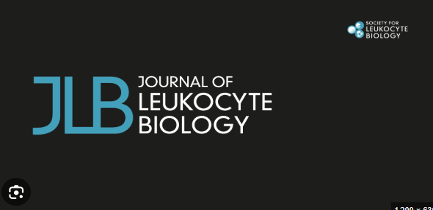This study investigated long COVID by analyzing blood gene expression changes in 24 hospitalized patients from admission to 4-12 weeks post-discharge. Patients without post-COVID symptoms showed a stronger decrease in inflammatory and coagulation gene activity over time, whereas those with symptoms fell into two distinct endotypes characterized by either persistently activated or suppressed inflammatory and hemostatic responses. These endotypes were validated in an independent cohort and could be identified using small gene signatures, suggesting potential for clinical stratification and personalized treatment of long COVID.
Publications

An AY, Baghela A, Zhang PGY, Blimkie TM, Gauthier J, Kaufmann DE, et al.
Front Immunol. 2023 Aug 23;14:1243689.
Post-COVID symptoms are associated with endotypes reflecting poor inflammatory and hemostatic modulation.

Kanai M, Andrews SJ, Cordioli M, Stevens C, Neale BM, Daly M, et al.
Nature. 2023 Sept;621(7977):E7‑26.
Investigating the role of host genetic factors in COVID-19 severity and susceptibility can inform our understanding of the underlying biological mechanisms that influence adverse outcomes and drug development1,2. Here we present a second updated genome-wide association study (GWAS) on COVID-19 severity and infection susceptibility to SARS-CoV-2 from the COVID-19 Host Genetic Initiative (data release 7). We performed a meta-analysis of up to 219,692 cases and over 3 million controls, identifying 51 distinct genome-wide significant loci— adding 28 loci from the previous data release2. The increased number of candidate genes at the identified loci helped to map three major biological pathways that are involved in susceptibility and severity: viral entry, airway defence in mucus and type I interferon.

Deng X, Gantner P, Forestell J, Pagliuzza A, Brunet-Ratnasingham E, Durand M, et al.
Clin Transl Immunology. 2023;12(11):e1468.
Plasma SARS-CoV-2 RNA elimination and RAGE kinetics distinguish COVID-19 severity.
This study used mathematical modeling of plasma SARS-CoV-2 RNA kinetics in 256 hospitalized COVID-19 patients to identify factors linked to disease severity. The model revealed that differences in viral clearance rates distinguish severe cases. A strong correlation was found between viral RNA dynamics and plasma levels of RAGE, a lung damage biomarker, suggesting RAGE as a potential surrogate for monitoring viral shedding and predicting severe illness. These findings highlight the value of viral clearance as a therapeutic target and the role of modeling in understanding COVID-19 progression.

Limoges MA, Quenum AJI, Chowdhury MMH, Rexhepi F, Namvarpour M, Akbari SA, et al.
Front Immunol. 2023 Sept 21;14:1223936.
Following SARS-CoV-2 infection a significant proportion of convalescent individuals develop the post-COVID condition (PCC) that is characterized by wide spectrum of symptoms encompassing various organs. Even though the underlying pathophysiology of PCC is not known, detection of viral transcripts and antigens in tissues other than lungs raise the possibility that PCC may be a consequence of aberrant immune response to the viral antigens. To test this hypothesis, we evaluated B cell and antibody responses to the SARS-CoV-2 antigens in PCC patients who experienced mild COVID-19 disease during the pre-vaccination period of COVID-19 pandemic.

Limoges MA, Lortie A, Demontier É, Quenum AJI, Lessard F, Drouin Z, et al.
J Leukoc Biol. 2023 Sept 27;114(4):358‑67.
SARS-CoV-2 mRNA vaccine-induced immune responses in rheumatoid arthritis.
Our objective was to characterize T and B cell responses to vaccination with SARS-CoV-2 antigens in immunocompromised rheumatoid arthritis (RA) patients. In 22 RA patients, clinical and biological variables were analyzed before and 4 weeks after each of 3 messenger RNA (mRNA) vaccine doses and compared with unmatched healthy individuals. Sequentially sampled peripheral blood mononuclear cells and sera were collected to determine immune profiles and to analyze the T cell response to a spike peptide pool and B cell specificity to the receptor-binding domain (RBD). Anti-spike antibodies were detectable in 6 of 22 RA patients after 1 dose of vaccine with increasing titers after each booster dose, although the overall response was lower compared with that in healthy control individuals. Responding patients after the first dose were more likely to have RA antibodies and a higher baseline proportion of circulating follicular B cells. In RA patients, the mRNA vaccine elicited a robust CD4+ T response to a spike peptide pool following the first and second doses. Consistent with the serologies, RBD-specific B cells exhibited a modest increase after the first dose and the second dose resulted in marked increases only in a fraction of the RA patients to both ancestral and omicron RBD. Our results highlight the importance of multidose COVID-19 vaccination in RA patients to develop a protective humoral response. However, these patients rapidly develop specific T CD4+ responses, despite delayed B cell responses

Willett JDS, Lu T, Nakanishi T, Yoshiji S, Butler-Laporte G, Zhou S, et al.
Hum Genet. 2023 Oct 1;142(10):1461‑76.
Identifying causal genes at GWAS loci can help pinpoint targets for therapeutic interventions. Expression studies can disentangle such loci but signals from expression quantitative trait loci (eQTLs) often fail to colocalize—which means that the genetic control of measured expression is not shared with the genetic control of disease risk. This may be because gene expression is measured in the wrong cell type, physiological state, or organ. We tested whether Mendelian randomization (MR) could identify genes at loci influencing COVID-19 outcomes and whether the colocalization of genetic control of expression and COVID-19 outcomes was influenced by cell type, cell stimulation, and organ. We conducted MR of ciseQTLs from single cell (scRNA-seq) and bulk RNA sequencing. We then tested variables that could influence colocalization, including cell type, cell stimulation, RNA sequencing modality, organ, symptoms of COVID-19, and SARS-CoV-2 status among individuals with symptoms of COVID-19. The outcomes used to test colocalization were COVID-19 severity and susceptibility as assessed in the Host Genetics Initiative release 7. Most transcripts identified using MR did not colocalize when tested across cell types, cell state and in different organs. Most that did colocalize likely represented false positives due to linkage disequilibrium. In general, colocalization was highly variable and at times inconsistent for the same transcript across cell type, cell stimulation and organ. While we identified factors that influenced colocalization for select transcripts, identifying 33 that mediate COVID-19 outcomes, our study suggests that colocalization of expression with COVID-19 outcomes is partially due to noisy signals even after following quality control and sensitivity testing. These findings illustrate the present difficulty of linking expression transcripts to disease outcomes and the need for skepticism when observing eQTL MR results, even accounting for cell types, stimulation state and different organs.

Yamga E, Soulé A, Piché A, Emad A, Durand M, Rousseau S.
Clin Proteomics. 2023 Oct 24;20(1):44.
Validation of ANG-1 and P-SEL as biomarkers of post-COVID-19 conditions using data from the Biobanque québécoise de la COVID-19 (BQC-19).
The quest for understanding and managing the long-term effects of COVID-19, often referred to as Long COVID or post-COVID-19 condition (PCC), remains an active research area. Recent findings highlighted angiopoietin-1 (ANG-1) and p-selectin (P-SEL) as potential diagnostic markers, but validation is essential, given the inconsistency in COVID-19 biomarker studies. Leveraging the biobanque québécoise de la COVID-19 (BQC19) biobank, we analyzed the data of 249 participants. Both ANG-1 and P-SEL levels were significantly higher in patients with PCC participants compared with control subjects at 3 months using the Mann-Whitney U test. We managed to reproduce and validate the findings, emphasizing the importance of collaborative biobanking efforts in enhancing the reproducibility and credibility of Long COVID research outcomes.

Bourumeau W, Tremblay K, Jourdan G, Girard C, Laprise C.
Microorganisms. 2023 Nov;11(11):2703.
Bacterial Biomarkers of the Oropharyngeal and Oral Cavity during SARS-CoV-2 Infection.
This study analyzed the oral and oropharyngeal microbiomes of 182 COVID-19 patients versus 75 uninfected individuals using 16S rRNA sequencing. Results showed that SARS-CoV-2 infection significantly altered bacterial communities, with Prevotella and Veillonella enriched in infected patients, while Streptococcus and Actinomyces dominated in uninfected controls. These changes indicate dysbiosis favoring opportunistic pathogens in COVID-19 patients. The identified microbial biomarkers may offer new avenues for screening and prevention strategies targeting upper respiratory tract dysbiosis.

An AY, Baghela A, Zhang P, Blimkie TM, Gauthier J, Kaufmann DE, et al.
bioRxiv; p. 2023.11.04.565404.
Dynamic gene expression analysis reveals distinct severity phases of immune and cellular dysregulation in COVID-19
This study analyzed longitudinal gene expression profiles from 128 hospitalized COVID-19 patients to uncover dynamic molecular changes throughout disease progression. Six disease phases were identified, each with distinct immune and metabolic pathways activated or suppressed over time. Early phases showed antiviral and hemostatic responses, while adaptive immune dysfunction and inflammation peaked during severe stages. Drug-gene enrichment analysis suggested repurposed drugs such as platelet inhibitors and antidiabetics tailored to specific phases. Machine learning–derived gene signatures enabled disease phase classification, aiding prognosis and personalized treatment. These insights highlight the potential for time-sensitive interventions to improve outcomes by targeting phase-specific molecular mechanisms.

Rhodes JS, Aumon A, Morin S, Girard M, Larochelle C, Lahav B, et al.
bioRxiv; p. 2023.11.22.568384
Gaining Biological Insights through Supervised Data Visualization
Dimensionality reduction-based data visualization is pivotal in comprehending complex biological data. The most common methods, such as PHATE, t-SNE, and UMAP, are unsupervised and therefore reflect the dominant structure in the data, which may be independent of expert-provided labels. Here we introduce a supervised data visualization method called RF-PHATE, which integrates expert knowledge for further exploration of the data. RF-PHATE leverages random forests to capture intricate featurelabel relationships. Extracting information from the forest, RF-PHATE generates low-dimensional visualizations that highlight relevant data relationships while disregarding extraneous features. This approach scales to large datasets and applies to classification and regression. We illustrate RF-PHATE’s prowess through three case studies. In a multiple sclerosis study using longitudinal clinical and imaging data, RF-PHATE unveils a sub-group of patients with non-benign relapsingremitting Multiple Sclerosis, demonstrating its aptitude for time-series data. In the context of Raman spectral data, RF-PHATE effectively showcases the impact of antioxidants on diesel exhaust-exposed lung cells, highlighting its proficiency in noisy environments. Furthermore, RF-PHATE aligns established geometric structures with COVID-19 patient outcomes, enriching interpretability in a hierarchical manner. RF-PHATE bridges expert insights and visualizations, promising knowledge generation. Its adaptability, scalability, and noise tolerance underscore its potential for widespread adoption.